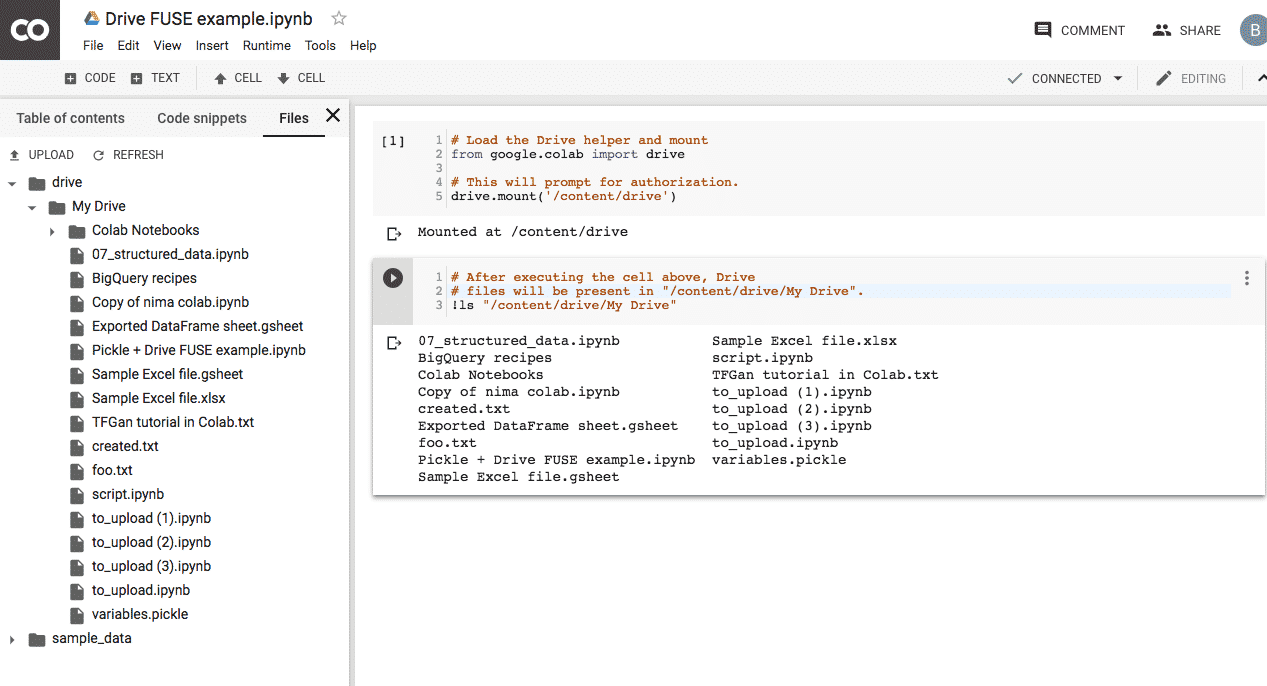
- #Use package in jupyter notebook online install#
- #Use package in jupyter notebook online full#
- #Use package in jupyter notebook online pro#
- #Use package in jupyter notebook online code#
We can also see NumPy as the replacement of MatLab because NumPy is mostly used along with Scipy (Scientific Python) and Mat-plotlib (plotting library). Operations associated with linear algebra.Mathematical and logical operations on arrays.By using NumPy, we can perform the following important operations − It basically stands for Numerical Python and consists of multidimensional array objects. It is another useful component that makes Python as one of the favorite languages for Data Science. These cells are basically used to add the text that we do not wish to be converted by the automatic conversion mechanism of jupyter notebook.įor more detailed study of jupyter notebook, you can go to the link NumPy Raw cells − The text written in them is displayed as it is. They can contain the stuff like text, images, Latex equations, HTML tags etc. Markdown cells − We can use these cells for notating the computation process. After writing the code/content, it will send it to the kernel that is associated with the notebook. The following are the three types of cells in a jupyter notebook −Ĭode cells − As the name suggests, we can use these cells to write code. On the other hand, if you are using standard Python distribution then jupyter notebook can be installed using popular python package installer, pip.

You will get a glimpse of it in the following screenshots − Select Python 3 and it will take you to the new notebook for start working in it. Now, after clicking the New tab, you will get a list of options. It is shown in the following screen shot − You just need to go to Anaconda Prompt and type the following command −Īfter pressing enter, it will start a notebook server at localhost:8888 of your computer.
#Use package in jupyter notebook online install#
If you are using Anaconda distribution, then you need not install jupyter notebook separately as it is already installed with it. With the help of jupyter notebooks, we can share our work with a peer also. One can also capture the result as the part of the notebook. It helps a data scientist to document the thought process while developing the analysis process. Jupyter notebooks can illustrate the analysis process step by step by arranging the stuff like code, images, text, output etc.

The following are some of the features of Jupyter notebooks that makes it one of the best components of Python ML ecosystem − They are formerly known as ipython notebooks.

Jupyter notebooks basically provides an interactive computational environment for developing Python based Data Science applications.
#Use package in jupyter notebook online full#
Along with moving data and results back and forth, the notebook pane can be docked within ArcGIS Pro, giving you the ability to launch it full screen or have it sit side by side with your maps, charts, and data so you can see the complete analytics pipeline in one place.
#Use package in jupyter notebook online pro#
Use ArcPy to call layers from your ArcGIS Pro project within the notebook, and output results from the notebook back to the Map view within ArcGIS Pro.
#Use package in jupyter notebook online code#
The interactive notebook interface gives instant feedback, if your code worked or didn’t, without needing to debug the entire script, making it ideal for iterative analysis and data discovery. Create pandas dataframes, data visualizations with libraries like matplotlib, or read in large data sets using dask. More convenient access to open source Python Open source integration has long been a feature of ArcGIS Pro, but now with built-in Python notebooks you can more readily explore all that open source integration has to offer.Any notebook created within ArcGIS Pro can be run in an open source Jupyter environment or in the hosted ArcGIS Notebooks in ArcGIS Enterprise or ArcGIS Online (currently in beta) – just make sure that the libraries used in the notebook are available in these other environments. You can easily import notebooks (.ipynb files) from across your organization and also have a built-in environment to create your own notebooks. ArcGIS Notebooks within ArcGIS Pro gives GIS Professionals a place to run Python notebooks without leaving the familiar ArcGIS Pro environment. Easier collaboration across GIS and data science teams.Rather than having part of your analysis within ArcGIS Pro and another part in a separate Jupyter environment you can store your notebooks within the ArcGIS Pro projects that they relate to, so that you always have access to the notebook(s) you need.



 0 kommentar(er)
0 kommentar(er)
